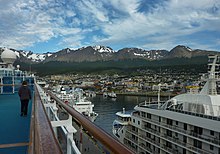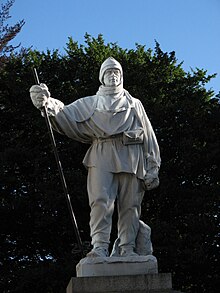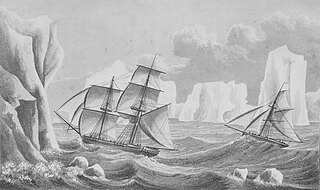
The history of Antarctica emerges from early Western theories of a vast continent, known as Terra Australis, believed to exist in the far south of the globe. The term Antarctic, referring to the opposite of the Arctic Circle, was coined by Marinus of Tyre in the 2nd century AD.

Sir Douglas Mawson was a British-born Australian geologist, Antarctic explorer, and academic. Along with Roald Amundsen, Robert Falcon Scott, and Sir Ernest Shackleton, he was a key expedition leader during the Heroic Age of Antarctic Exploration.

The Southern Hemisphere is the half (hemisphere) of Earth that is south of the Equator. It contains all or parts of five continents and four oceans, as well as New Zealand and most of the Pacific Islands in Oceania. Its surface is 80.9% water, compared with 60.7% water in the Northern Hemisphere, and it contains 32.7% of Earth's land.
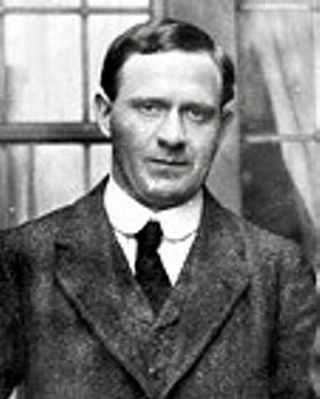
Louis Charles Bernacchi was an Australian physicist and astronomer best known for his role in several Antarctic expeditions.

This is a timeline of the history of New Zealand's involvement with Antarctica.

The United States Antarctic Program is an organization of the United States government which has a presence in the Antarctica continent. Founded in 1959, the USAP manages all U.S. scientific research and related logistics in Antarctica as well as aboard ships in the Southern Ocean.

Brown Station is an Argentine Antarctic base and scientific research station named after Admiral William Brown, the father of the Argentine Navy. It is located on Sanavirón Peninsula along Paradise Harbor, Danco Coast, in Graham Land, Antarctic Peninsula.

Mawson's Huts are a collection of buildings located at Cape Denison, in the far eastern sector of the Australian Antarctic Territory, some 3000 km south of Hobart. The huts were erected and occupied by members of the Australasian Antarctic Expedition (AAE) of 1911–1914, led by geologist and explorer Sir Douglas Mawson.
John Biscoe was an English mariner and explorer who commanded the first expedition known to have sighted the areas named Enderby Land and Graham Land along the coast of Antarctica. The expedition also found a number of islands in the vicinity of Graham Land, including the Biscoe Islands that were named after him.

Robert Charles Swan, OBE, FRGS is the first person to walk to both poles.
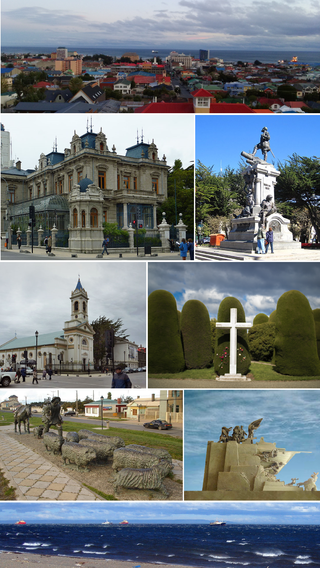
Punta Arenas is the capital city of Chile's southernmost region, Magallanes and Antarctica Chilena. Although officially renamed as Magallanes in 1927, the name was changed back to Punta Arenas in 1938. The city is the largest south of the 46th parallel south and the most populous southernmost city in Chile and the Americas. Due to its location, it is also the coldest coastal city with more than 100,000 inhabitants in Latin America. Punta Arenas is one of the world's most southerly ports and serves as an Antarctic gateway city. Punta Arenas is the world's southernmost city with more than 100,000 inhabitants and claims the title of southernmost city in the world, although this title is also claimed by Ushuaia in Argentina, which lies farther south but is slightly smaller than Punta Arenas.
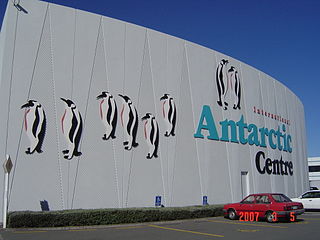
The International Antarctic Centre is a visitor attraction and public science discovery centre in the suburb of Harewood, Christchurch, New Zealand. It is located at Christchurch International Airport, adjacent to the buildings that are the Christchurch base for the Antarctic programmes of the US, New Zealand and Italy.

MS Explorer or MV Explorer was a Liberian-registered cruise ship, the first vessel of that kind used specifically to sail the icy waters of the Antarctic Ocean. She was the first cruise ship to sink there, after striking an iceberg on 23 November 2007. All passengers and crew were rescued.

The Southern CrossExpedition, otherwise known as the British Antarctic Expedition, 1898–1900, was the first British venture of the Heroic Age of Antarctic Exploration, and the forerunner of the more celebrated journeys of Robert Falcon Scott and Ernest Shackleton. The brainchild of the Anglo-Norwegian explorer Carsten Borchgrevink, it was the first expedition to over-winter on the Antarctic mainland, the first to visit the Great Ice Barrier—later known as the Ross Ice Shelf—since Sir James Clark Ross's groundbreaking expedition of 1839 to 1843, and the first to effect a landing on the Barrier's surface. It also pioneered the use of dogs and sledges in Antarctic travel.

Tourism started in Antarctica by the sea in the 1960s. Air overflights started in the 1970s with sightseeing flights by airliners from Australia and New Zealand, and were resumed in the 1990s. The (summer) tour season lasts from November to March. Most of the estimated 14,762 visitors to Antarctica from 1999–2000 were on sea cruises. During the 2009 to 2010 tourist season, over 37,000 people visited Antarctica.
Sidney Harry Jeffryes was an early Australian wireless telegraphy operator. Trained by Australasian Wireless, he was initially employed on coastal shipping and established at least one record for distance transmission. But he is best known for his service as the wireless officer at Cape Denison during the second year of the Australasian Antarctic Expedition, from February 1913 to December 1913, under the command of explorer Douglas Mawson. Jeffryes' service ended in September 1913, two months prior to the relief of the shore party, after he developed symptoms of paranoia and had to be relieved of his duties.

Melchior Base is an Argentine Antarctic base and scientific research station. It is located on Gamma Island, Melchior Islands, Dallmann Bay, in Palmer Archipelago on Bellingshausen Sea, Antarctic Peninsula.
Students on Ice Foundation is a Canadian charitable organisation that leads educational expeditions to the Arctic and Antarctic for international high school and university students. Its mandate is to provide youth, educators and scientists from around the world with learning and teaching opportunities in the polar regions, with the goal of fostering an understanding of, and commitment to building a more sustainable future.

Michelle Rogan-Finnemore is a New Zealand-American science administrator, and currently the Executive Secretary of the Council of Managers of National Antarctic Programmes (COMNAP) which is the international association which brings together the National Antarctic Programs that make up its members. She is also the namesake of Finnemore Peak.
Professor Nicole Webster is an Australian marine scientist who is the Executive Director for the Institute of Marine and Antarctic Studies at the University of Tasmania.


